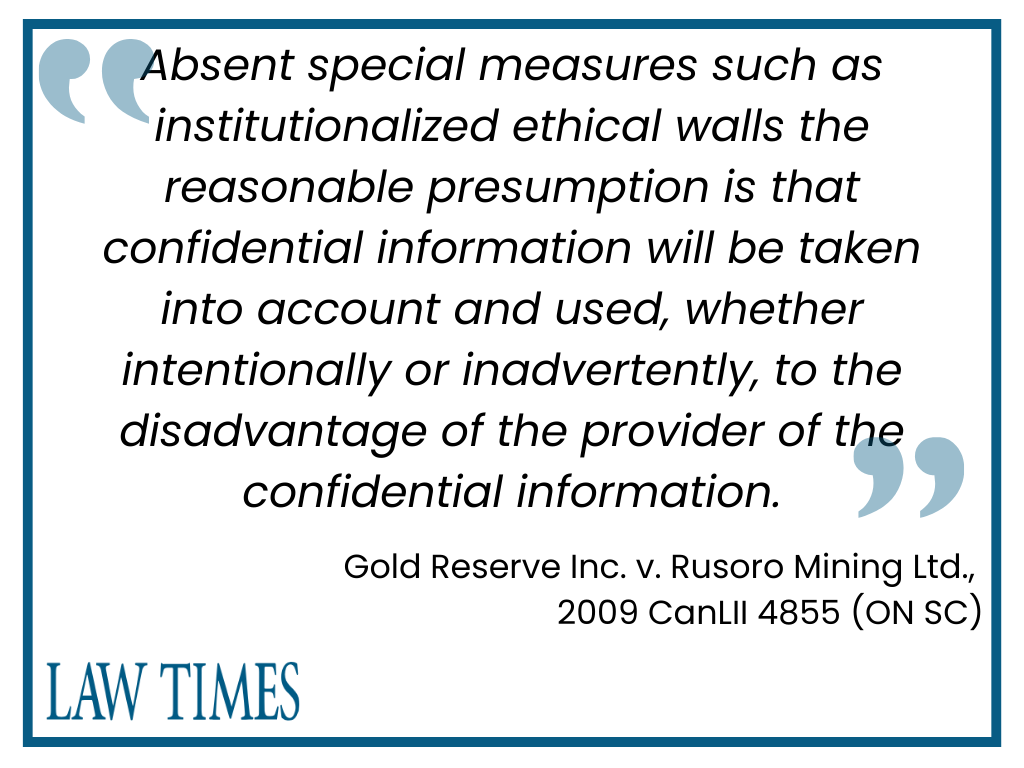
Here’s a basic guide for lawyers whose clients need confidentiality agreements. We’ll also discuss some important common laws on their use and execution

Updated October 23, 2024
Every business would have its own secret to protect — a recipe, a design, data of its consumers — for which they would want to definitely reach out to lawyers for. In most cases, clients would like to know how to protect, both legally and effectively, the private information that their businesses treasure so much.
For this purpose, a lawyer’s go-to is to suggest using confidentiality agreements, among other things. But are confidentiality agreements still relevant today, and what are the ways to bring out their full potential?
A confidentiality agreement is a binding legal document, which protects the private, confidential information of a business by preventing its illegal disclosure to the public. Through a confidentiality agreement, one of the parties consents to be restricted on the handling and disclosure of classified data that it receives from the other party.
While it’s mostly used by employers against their employees handling sensitive information, it’s also commonly used by businesses in their commercial transactions.
Confidential agreements are likened to non-disclosure agreements (NDAs), although these two may be used for different purposes and in different contexts. They’re also used synonymously by most people. But whether it’s called a confidential agreement or an NDA, its purpose is the same — to prevent the unauthorized disclosure of classified, confidential information.
As a basic explainer, here’s a video that shortly discusses what a confidential agreement is and some of its differences with an NDA:
Businesses who need a lawyer in drafting or reviewing their confidential agreement can reach out to any of the best lawyers in Ontario. They can refer to this Special Report of Canadian Lawyer, our sister publication, on the Top Law Firms in Ontario.
In Canada, confidential agreements are governed by the law on contracts, such as its validity and enforceability. This is where lawyers enter the picture by guiding their clients on how these agreements legally work.
While there’s no fixed form for confidential agreements to become valid, there are essential features that an agreement must have for it to be complete:
Since a contract may hold everything that its parties want, the above elements of a confidentiality agreement may be added, reformed, and improved. This is also where lawyers fill in the gap; they can evaluate the transaction and shape the agreement in a way that it will serve the parties best.
Confidentiality agreements and NDAs work two ways: internally and externally. Within a business, confidentiality agreements are used to protect intellectual property (e.g., trade secrets) and other information owned by the employer. On the other hand, when businesses interact with each other (e.g., through a merger and acquisition), executing a confidentiality agreement is also helpful to the parties.
One of the many uses of confidentiality agreements is that it works as an added clause to an employment contract or separately from it. Either way, an applicant’s consent to the agreement is usually a prerequisite for their hiring in a company. Here are some of the uses of an employment contract’s confidentiality agreement:
However, legal counsels are warned of recent case law when using confidentiality agreements in employment contracts. Worthy to note is the case of Henderson v. Slavkin et al., 2022 ONSC 2964 (CanLII), where the court held that confidentiality clauses in employment contracts must strictly follow the Employment Standards Act, 2000 (ESA). This case also shows that contracts, such as confidentiality agreements, are still subject to statutes concerning the matter.
Another area where confidentiality agreements are frequently (and importantly) used is for mergers and acquisitions. Common law has taught us that we must carefully draft and actively negotiate confidentiality agreements to prevent any dispute with our business partners.
In Gold Reserve Inc. v. Rusoro Mining Ltd., 2009 CanLII 4855 (ON SC), the Ontario Superior Court of Justice granted an injunction against Rusoro, the bidder in this case. This prevented them from continuing with their hostile takeover bid of Gold Reserve. The center of the controversy are allegations that Rusoro had access to Gold Reserve’s confidential information through its relationship with the target’s financial adviser, Endeavour Financial International Corp.
According to the judgment, Endeavour was acting as financial adviser both for Gold Reserve and Rusoro, which are also both mining companies. This is the case of the December 2008 bid, when Rusoro made its play for Gold Reserve. At the same time, Endeavour was a creditor to and shareholder in Rusoro, and one of its key former employees had links to the mining company. But within minutes of Rusoro’s bid, Endeavour ended its relationship with Gold Reserve.
Endeavour, over the years, had access to significant information about the Gold Reserve’s business. This includes the financial, technical, geological, and operational details related to a major gold and copper project in Venezuela of Gold Reserve. In exchange, Endeavour had signed a confidentiality agreement acknowledging that it “shall not knowingly act against the interests of Gold Reserve in a material way.”
Prior to the bid, Endeavour even made a presentation to Rusoro about the advantages of a bid for Gold Reserve. It also included discussion about the promise of additional exploration potential at one of its projects. In turn, Endeavour argued that it only used publicly available information in its dealings with Rusoro, a notion which the court rejected.

“The defendants’ argument that their officers and employees can compartmentalize their minds so as to segregate and not use the confidential information given to them in the past lacks reality,” the judgment stated.
Eventually, this case laid down the presumption that a party with access to confidential information would necessarily use it during an unfriendly bid. Therefore, the reasonable presumption is that “confidential information will be taken into account and used, whether intentionally or inadvertently, to the disadvantage of the provider of the confidential information.” Unless there are special measures, such as institutionalized ethical walls, this presumption will apply.
Noting that Rusoro was fully aware of Endeavour’s relationship with Gold Reserve, the bidder allowed itself to unfairly benefit from its financial adviser’s position. “Rusoro cannot be in a better position than Endeavour itself,” the court ruled.
Another decision on confidentiality agreements in M&As is the Ontario case of Certicom Corp. v. Research In Motion Limited, 2009 CanLII 1651 (ON SC).
The court sided with Certicom’s view that the existence of a confidentiality agreement between the two parties prohibited the BlackBerry maker from using information it gained through its relationship with Certicom to launch a hostile bid. That was the conclusion despite a standstill agreement barring such a takeover already expired.
Here, the issue came to what Research In Motion (RIM) could legally do under the terms of the confidentiality agreements. It signed two agreements in 2007 and 2008, the earlier of which contained the standstill provision forbidding RIM from launching an unfriendly takeover.
By the time the company went forward with a hostile bid, that part of the agreement had expired. Still, the court nevertheless ruled that the language in the non-disclosure documents prevented its actions.
That’s because while the 2007 agreement allowed RIM to use the information disclosed by Certicom for purposes including “some form of business combination between the parties,” it was held that the word “between” excluded the notion of hostile bid. This means that when the 2007 NDA was negotiated, the parties are thinking of a friendly bid for Certicom.
RIM argued that a ruling against it would amount to extending the expired standstill provisions, which would be inconsistent with the rationale for having such agreements in the first place. However, the court held that the language in the confidentiality and standstill provisions served different purposes. This is especially because the standstill provision allows for much stronger protection against an unfriendly takeover. As such, when the standstill provision expired, it allowed RIM to make a hostile bid, but only if it had not received and used any confidential information the bid’s assessment.
Adding to RIM’s woes was its admittance that it had in fact used the disclosed information to decide whether to attempt a takeover. As a result, the court ruled that it had an unfair advantage in its bid versus other potential buyers for Certicom.
Aside from keeping tabs on recent statutory developments and court decisions on confidentiality agreements, below are some of the best practices when drafting these clauses or agreements:
Other than focusing their efforts in implementing the confidential agreement with their business parties and third parties, companies must also create their own privacy policies. This is where the NDAs may come in, aside from confidential agreements, such as those which cover their current and past employees. A combination of internal and external efforts in protecting their classified data may be too much but will help them in the future.
Here’s a sample guideline that companies can use when creating their policies to protect their confidential information:
Alternatively, businesses can also reach out to an IP lawyer when learning more about confidential agreements. This Special Report of Canadian Lawyer on the Top Intellectual Property Law Boutiques is a start for those who are looking for an IP lawyer near them.
Whether it’s an M&A transaction or a usual commercial transaction, it will be helpful to specify all the terms in a confidentiality agreement:
Using confidentiality agreements are not just legal formalities between businesses. They also are vital tools that help build and keep strong commercial relationships among parties in a contract. This just proves that lawyers have a huge role in drafting and reviewing their clients’ contracts along with their confidentiality agreements. Businesses must also know that while protecting their most prized secrets can be done on their own, having a legal counsel by their side will greatly help them in the long run.
For more resources on confidentiality agreements, head over to our page related to the practice area of Privacy and Data. It has recent court decisions to guide not just lawyers, but also their clients, in protecting one’s confidential information.